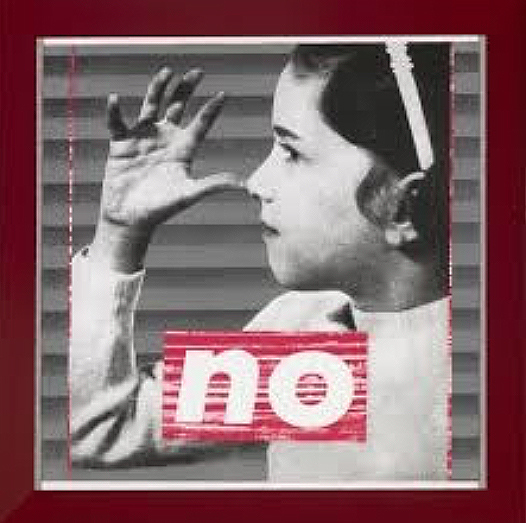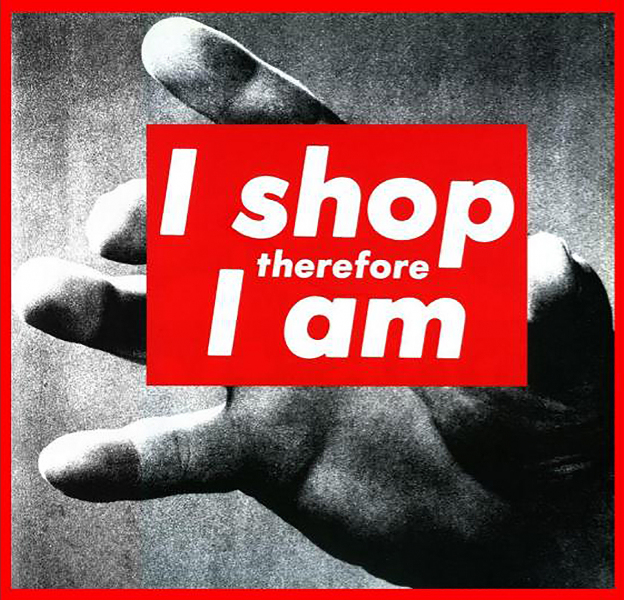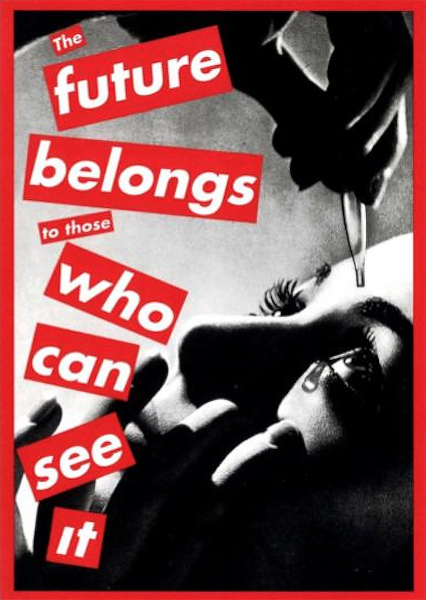.
An Examination of the Work by Barbara Kruger
.
For this research assignment, I have chosen to exam the work of Barbara Kruger, an artist that is mentioned in our textbook as well as one I have been intrigued with since high school. Her work consists of both black and white photographic material accompanied by a collage style of bold text in black, white and red type. Her art typically deals with more feminist constructs in relation to the consumerist ideals and power dynamics that surround societal identity. Her more notable art was cultivated in the 80s and has been an inspiration to many of the artists that exist today.
The first image depicts a young girl imitating a silly posture with the word “no” layered on top. This image is particularly impactful, as I believe it exemplifies the deeper more profound aspects of some of her work. This young girl is juxtaposed against the word no. No, being a word that many girls of this era were told is inappropriate for their gender. In a time where the feminist movement was gaining a new wave of traction, Kruger was able to expand the meaning of her work by adding one simple word. I think the bold type adds fierceness to the work and juxtaposed against the youthfulness of the girl, creates a stark impression of what is allowed and questions what isn’t.
Her work demonstrates a type of elegant editorial style. Many of her pieces could be and have been utilized in more graphic publications such as books or magazines. The placement of the type on top for the images demonstrates the control of a vision and minimalist execution. In image 2, Kruger created an image that would be used as a poster for the Women’s March in 1989 in support of abortion rights. This piece was created through the use of the processed image spliced with the negative of the same image. The words “ Your body is a battleground” are layered with this imagery. The image quite literally highlights the dark sides of womanhood. However, the image does not directly address the message of abortion, but rather highlights womanhood in a more general fashion. In this way, abortion is not highlighted as the issue, but rather women.
Her work has concentrated around what it means to be female. As such, I think images 3,4, and 5 deal with the different aspects of what is expected from women, especially during the time periods in which these images were created. Particularly, in image 5, the image appears to be pinned in place. This effect is especially powerful because sewing is typically seen as a labor of women. The words “ We have received orders not to move” accompanies the image. This layering both touches on the labor in which women are more forced into as well as identifies the lack of control over their own bodies.
It is unfortunate, that while these images deal with women, they primarily address the concerns that surround white womanhood and neglect the intersectionality of minority women. Her images for the most part, are of white women and the issues surrounding a more middle class lifestyle. Her imagery, while powerful, negates many of the other experiences of minority individuals. This brings into question the oppressiveness of her work. Does her work oppress those neglected by being the societal systems that her work chooses to ignore? It seems unclear if these choices were intentional, but as the work has become more recognizable worldwide, it is hard to neglect the power behind work that addresses societal problems in relation to only those of the majority.
.
About The Author: Tatiana Lathion is a senior enrolled at Haverford College majoring in Political Science and Government. To access additional articles by Tatiana Lathion, click here:https://tonyward.com/tatiana-lathion-uncertainty-new-beginnings/




